#the electric nature
Text
Dust Volume 9, Number 5
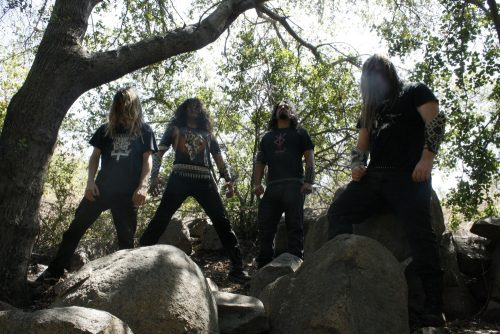
Ascended Dead
Hard to believe we’re approaching the halfway point of another year, and yet here we are in May, thinking about the mid-year and how we’re going to fit all the excellent stuff so far into a reasonable length list. There’s always too much music, a wonderful problem, but a problem all the same. And so we turn again to Dust to burn off some of the excess. As usual, the reviews run the gamut, from lucid ambient reveries to blistering industrial mayhem, from joyful death metal (surely a contradiction in terms?) to ragged improvised noise. Contributors this time include Ian Mathers, Andrew Forell, Jonathan Shaw, Tim Clarke, Bill Meyer, Christian Carey Jennifer Kelly, Bryon Hayes and Jim Marks.
Aarktica — Paeans (Projekt)
Paeans by Aarktica
One of the most distinct and striking things about Jon DeRosa’s work as Aarktica has always been the way he blends more ‘pure’ ambient material with songs, both his own and others (everyone from Danzig to Peruvian shamanic songwriter Artur Mena). The new Paeans actually marks the first Aarktica LP without DeRosa’s vocals since his debut, 2000’s No Solace for Sleep. Coming on the heels of last year’s magnificent We Will Find the Light, this record could have just felt like a post-banquet digestif, but instead it’s a reminder of the beautiful, clear atmospheres DeRosa can make with just his guitar (here ably assisted by Henrik Meierkord on cello and viola). Whether it’s going Ashra-stratospheric on “Arcturan Transmission” or drifting towards Stars of the Lid on “Golden Hour at Pyramid House,” the result is a reminder of how vital his ambient work is.
Ian Mathers
Antimaterial Worlds — Double Saturns Last Purification Exercises (Chemical X)
Double Saturns Last Purification Exercises by ANTIMATERIAL WORLDS
Gaura-jīvana Dāsa has a long history of industrial noise making under various names and degrees of success. His latest incarnation, as Antimaterial Worlds, combines the raucous noise of past projects Skull Catalog and Sewn Leather with his learnings from several years of immersion in Vedic religious studies. The results will do little to win converts to either enterprise. Musically, Double Saturns Last Purification Exercises clings to lesser Nine Inch Nails flailing whilst the lyrics swing from masochistic self-abnegation to that peculiar form of So-Cal spiritual sadism that seeks to purge the penitent while scourging the sinner. The “Kill them all and let God sort them out” forgets that hubris is a powerful enemy for the faithful but if you like your prophets wild-eyed, messianic and slinging guitars instead of lightning bolts and locusts, have at it.
Andrew Forell
Ascended Dead — Evenfall of the Apocalypse (20 Buck Spin)
Evenfall of the Apocalypse by Ascended Dead
Evenfall of the Apocalypse comprises 42 minutes of perversely joyous Metal ov Death. Not much else to tell you, folks. The four San Diego-based musicians in Ascended Dead continue their project of making songs that cleave to the verities of the Old School, which they have come by honestly: drummer C. Koryn and bass player Kevin Schreutelkamp have put in time in the live bands of Blasphemy, Incantation and Morbid Angel, death metal legends, all. In Ascended Dead, that rhythm section is joined by guitarists Ian Lawrence and Jon Reider, and the requisite whirling chaos commences. It’s a lot of fun. Every song is overstuffed with riffs and ideas, all constantly on the verge of collapsing into noisome, rotten goo. Koryn’s drumming keeps them coherent (mostly, anyways) and coaxes them into increasingly wacky shapes, building toward the next semi-blackened guitar break or bout of psychotic shredding. There’s nothing innovative or risk-taking here, but it's nimbly composed, confidently executed and always on the move. The shorter tunes (“Nexus of the Black Flame,” “Bestial Vengeance”) are especially effective. They arrive, they mess up your mind, they’re gone. Come back and do it again, please.
Jonathan Shaw
Chained to the Bottom of the Ocean — Obsession Destruction (Redscroll Records)
Obsession Destruction by Chained to the Bottom of the Ocean
There’s not a tremendous amount of range in sludge metal, so it makes sense that Massachusetts band Chained to the Bottom of the Ocean seems to have derived its name by altering the title of a song (“Fucking Chained to the Bottom of the Ocean”) from Thou, perhaps the best sludge band to make misery-inducing music since Eyehategod. But’s there’s a line to be drawn between recognition of one’s artistic idols and pastiche, and Chained to the Bottom of the Ocean steps right along it — or crawls, or trudges, as the case may be. Songs like “Summer Comes to Multiply” and “Every Day a Weeping Curse” sound a whole lot like…Thou. This reviewer responds, at a profound gut level, to those tones and rhythmic structures, so he can dig a tune like “Ten Thousand Years of Unending Failure.” Ironically, it succeeds. It’s crushing and thrilling and huge, and it closes with an entertainingly daft lyric couplet: “When obsession takes over I’ll be fine / When destruction takes over I’ll decide.” Is that nihilism? A sort of fist-clenched catharsis? The aggro intensities of the music can accommodate both, creating a pretty good set of emotive qualities for a sludge song. Why decide, dudes?
Jonathan Shaw
Clark — Sus Dog (Throttle)
Sus Dog by Clark
Clark’s most recent releases have been dominated by soundtracks and neo-classical work (2021’s Playground In A Lake and 2019’s Kiri Variations are especially beautiful). On his new album, Sus Dog, he returns to an electronically dominated palette, introduces his own voice as a key element, and even gets Thom Yorke on board as executive producer. Yorke’s involvement is obviously a drawcard for anyone interested in the Radiohead frontman’s oeuvre, with the overall sound of Sus Dog largely in the vein of Yorke’s last solo album, Anima. Clark’s voice is similar to Caribou’s Dan Snaith in its timbre and the way it sits in the mix, while squiggly synthesizer lines and pounding drum breaks carry the music forward with aplomb. However, it’s Sus Dog’s down-tempo moments that really shine, such as the title track, featuring guest vocals from Anika; “Medicine,” featuring Yorke on bass and vocals; and the piano-driven closer, “Ladder,” which repeats the striking vocal refrain, “Living on a ladder, stuck between two floors.”
Tim Clarke
The Electric Nature — Old World Die Must (Feeding Tube / NULL|ZØNE)
Old World Die Must by The Electric Nature
The Electric Nature is a free noise trio which is based in Athens, GA. Improvisation is baked into their methodology, but that doesn’t mean that they serve up raw jams. This album, which is a rare vinyl outing in their mostly cassette/digital discography, contains just two, side-long tracks, but includes sounds made between 2015 and 2022. Given the density of their sound, one suspects that Michael Potter, Michael Piece and Thom Strickland, who are jointly credited with guitars, synths, drums and recordings, add tapes of earlier performances to the one at hand. But don’t get the idea that these guys are snakes swallowing their collective tail; they’re decidedly open to outside input. “Enter Chapel Perilous” opens with the croaks of some swamp denizens, and then turns the spotlight over to Sunwatchers saxophonist Jeff Tobias, whose long, furry tones clear the path for the eventual battering assault. The trio is likewise augmented on the flip side’s titular performance by John Kiran Fernandes, whose clarinet adds a Morricone-esque dimension to the late-night squall. Times are tough nowadays — sometimes it takes a village to whip up some solar wind.
Bill Meyer
Feather Beds — Softer Measures (Strange Brew)
Softer Measures by Feather Beds
Feather Beds is the experimental pop project of Irish musician Michael Orange, and on his new album, Softer Measures, he pushes things to perverse extremes. The album title seems to allude to the music’s raw materials being endlessly pliable, able to be squashed and stretched into new forms. There are identifiably pop-leaning tunes here, but often buried beneath effects and refracted through a funhouse mirror. Predictably it’s the two singles, “Really Disney” and “Sport of Boxing,” that offer the most immediate gratification, but even then, things get weird, a la early Animal Collective or Ronald Jones-era Flaming Lips. “Sport of Boxing,” for example, is a jangly lo-fi pop tune that hurtles along at an addictive clip, only to be swallowed up by chittering digital loops. Indeed, there’s something decidedly nightmarish about the way the songs refuse to follow the path you might imagine. Rhythms stutter and stumble, guitar tones warp in and out of tune, voices circle eerily and overlap one another. All the chaos renders moments of calm, such as the end of “We Safari,” uncannily beautiful.
Tim Clarke
The High Strung — Address Unknown (Paper Thin)
youtube
The High Strung makes a kind of trebly, warbly, high energy garage pop pioneered by the Seeds and the Flaming Groovies and rediscovered during the aughts “rock is back” era by the Cynics, the Gripweeds and the Insomniacs. It’s not quite bubblegum, but it’s got a fair lacing of sweetness, and it’s hard to do well without slipping into saccharine cliché. Address Unknown is the band’s 11th album, following several decades together, through multiple line-ups and one major breakthrough: a song in opening credits of the Showtime series Shameless. It is everything you’d expect from a band of lifers—tight and relaxed at the same time, sure of itself but not particularly concerned about reception, and utterly charming. I like “Different Animal” the best, with its pounding beat and fluttering tunefulness, its clever rhymes and loopy harmonies. It’s the single and the video, and you can see why they focused on it, but there’s plenty of other good stuff as well. “Overcoat and Skis” with its Beatles-esque tootling keyboard and its wistful upward lilting melody, seems loose and casual until you recognize the sharpness of the ski-themed writing. (“It’s all downhill from here.”) “Run It Back” rocks harder, in a one-two punching way, but never abandons its tipsy whimsy, like XTC but rougher. Here’s a band neither torqued too tight nor slouched too low, but just a little high strung.
Jennifer Kelly
Joseph Jarman-Don Moye feat. Craig Harris & Rafael Garrett — Earth Passage-Density (Eargong)
youtube
By the early 1980s, when this album was recorded, the Art Ensemble Of Chicago spent a lot of their time playing music in other settings. On Earth Passage-Density, percussionist Don Moye and woodwinds multi-threat Joseph Jarman joined forces with Craig Harris, a trombone and digeridoo player who was active on several New York scenes, and Rafael Garrett, a bass and winds player who one worked with John Coltrane on the mind-melter, Om. Originally released by Black Saint and recently re-pressed by Eargong, this session shows the same breadth of reach as the AEC without shortchanging the creativity of Garrett and Harris. Patient development balances jump-cut transitional strategies and Brownian rhythmic urgency as they work their way through ceremonial dirges, angular bop, and gleefully chaotic funk. If you have any appreciation for the Art Ensemble’s pre-ECM recordings and haven’t heard this record yet, well, why are you being so hard on yourself?
Bill Meyer
Rob Mazurek and Exploding Star Orchestra – Lightning Dreamers (Rogue Art)
youtube
Rob Mazurek enlists a formidable lineup for Lightning Dreamers, Exploding Star Orchestra’s latest recording, including instrumentalists Jeff Parker, Nicole Mitchell, Craig Taborn, Gerald Cleaver, and Angelica Sanchez. Damon Locks provides futurist lyrics and intoned vocals, taking the lead on “Future Shaman.” Mazurek’s cornet solo on the spacy “Dream Sleeper” is a standout, mellifluous and melodically inventive. The supple groove and doubled melodies on “Shape Shifter” demonstrate the groups allied affinities to fusion and modern jazz. Add in hat tips to the Arkestra, as on the paired pieces “Black River” and “White River,” and a fulsome brew is concocted.
Christian Carey
Miranda and the Beat — S-T (Ernest Jennings)
Miranda And The Beat by Miranda and The Beat
“Sweat!” shouts Miranda Zipse in the opening salvo to this very strong album, as a soul-powered guitar snakes through surges of 1960s organs. She sounds like a long-lost Bond opening credit singer, from the Connery era no less, but she formed her band only a few years ago with her childhood friend Kim Sollecito, after dropping out of high school at 15. Now, she wields an astonishing belt, a swaggering style and a crack band of retro-maximalists. She’s caught the attention of another 1960s soul vamper, King Khan, who enthused, “I never thought I would see someone be able to play guitar with the ferocity of Link Wray, and sing like Lydia Lunch had a nuclear meltdown and morphed into Etta James and Yma Sumac.” Too much? Maybe, but “I’m Not Your Baby” swells and roars, surf guitar cascading through a Spector-esque wall of sound. “Concrete” cranks the tension with stuttering high-hat and drum—and blasts out of the blocks with a battering bass line. “Listen to the sound of the kids that are hanging out on the street,” she spits against the rough beat, and who knew that the kids would sound like this?
Jennifer Kelly
Olololop, Arakawa Atsushi And Zea — Soyokaze (Makkum)
Soyokaze by Olololop, Arakawa Atsushi and Zea
The Japanese trio Olololop plays electronic and acoustic percussion, and their compatriot Arakawa Atsushi manages electronics; one of them also plays a credible saxophone. They encountered Zea, the nom-du-rock of singer-guitarist Arnold de Boer (also of the Ex), at a Dutch music festival. Impelled by mutual appreciation, they flipped on some microphones and improvised a session which doesn’t fit easily into anyone’s pigeonhole, and is better off for it. Beats sputter, reeds and synth sputter, and at one point a poem drifts through the proceedings like a half-remembered dream. This music is a thing unto itself, beholden to no genre, but infused with the delight of jumping right in and finding out that you can swim.
Bill Meyer
Joakim Rainer Trio — Light Sentence (Sonic Transmissions)
Light.Sentence by Joakim Rainer Trio
It must be daunting for any young musician to pick a point of entry into jazz these days. Joakim Rainer Petersen, the leader of this Norwegian piano trio, has chosen wisely. While he may not be as distinctive a composer as Kris Davis or Andrew Hill, his interest in their music helps to steer his own towards expressions of formal logic that are open to improvisational reassessment at any moment. He and bassist Alexander Risis sound like they’re completing each other’s ideas, but not by adding one guy’s statements to the other’s; no, their ideas cohere like two people saying parts of the same sentence. Drummer Rino Sivathas keeps things moving with a nicely splashy attack that keeps the moments of reflection from bogging down. Word has it that this combo tours, at least in Europe; keep your eyes and ears peeled.
Bill Meyer
Roser Monforte Trio — Landscape Songs (Self-Release)
LANDSCAPE SONGS, RM TRIO by RM TRIO
This slightly unusual trio lineup delivers jazz with a prog twist. Monforte has a big sound but gives drummer Jordi Pallarés and guitarist Pau Mainé plenty of space to realize her highly polished but uncluttered compositions.
The first two tracks, “Once upon a Time” and “Horses,” blend together into a suite that shows the group at its best. It begins with over a minute of unaccompanied guitar, which, as throughout the album, Mainé plays clean and with restraint. Pallarés is boisterous once he gets going, producing a wide range of sounds out of what looks like a fairly standard jazz kit, though well appointed with cymbals, in online videos. The leader eases into the tune around the minute-and-a-half mark with a catchy descending lick, and they’re off. Pallarés takes a solo at the transition between the tunes that is followed by the introduction of a new, serpentine theme and a neat shift in tempo, and the suite draws to a close with a funky vamp and a revisitation of the serpentine theme.
The rest of the tunes are nearly as memorable and fairly concise, most running three to five minutes. There’s plenty of variation, with “Cosmic Dancer” and “Orixa” straying into exotica and fusion territory, the lovely ballads “Absence” and “Baraka” slowing things down, and the rousing “anTANAnarivo” and “Atzutac” sure to set toes tapping.
Jim Marks
Tomten — Artichoke (Plume)
Artichoke by Tomten
Tomten’s songs billow and swell in that frictionless, effortless way that often indicates great care and craft. The Seattle-based band makes heavy use of keyboards—organs and synthesizers for instance—for lulling sustained tones that envelop and soften rock song architectures. The surf rock swagger of “Lizard in the Grass” comes wrapped in a dream pop shimmer. “Grapefruit Sea” the opener and early single, has the rolling gait and spiraling psychedelic expansiveness of a Grand Archive cut (it reminds me of “Sleepdriving,” always a good thing). The lyrics are better than they need to be, with precise and evocative natural imagery scattered across the disc, poppies and wild heather and mallow weeds. The whole thing feels like a pleasant dream, radiant but fuzzy at the edges.
Jennifer Kelly
Volcano the Bear — Amateur Shakes (Volucan)
Amateur Shakes by Volcano The Bear
A new Volcano the Bear album is cause for celebration among fans of strange sounds. Unfortunately, even though it arrived this year, Amateur Shakes doesn’t comprise recent music. The Leicester-based Dadaists laid these songs to tape at the tail end of the 2000s, prior to the release their final official album, Golden Rhythm / Ink Music in 2012. Timeline aside, this is a notable release for the band. Recorded with Andreas Schmid at Faust Studios and with Hans-Joachim Irmler producing, this is some of their best-sounding and most surreal music. Like in a Burroughs novel, thematic elements explored on past records reappear in these songs’ lyrics, which are sung, croaked and howled. The group have dialed back their signature avant-jazz and polka leanings, leaving room for their less-frequented outré rock tendencies to shine through. The lengthier, multi-part songs “Amateurs Blind” and “Classic Clarence Fusion” somehow come across as the most accessible, with the other tracks absorbing the experimentalist influences of the studio. There’s an uncanny symbiosis going on here, but can it really be a coincidence that a proximity to Faust has intensified the band’s already kooky demeanor? This writer thinks not.
#dust#dusted magazine#aartika#ian mathers#antimaterial worlds#andrew forell#ascended death#jonathan shaw#chained to the bottom of the ocean#clark#the electric nature#bill meyer#feather beds#the high strung#jennifer kelly#Joseph Jarman#miranda and the beat#Olololop#joakim rainer#Roser Monforte Trio#jim marks#tomten#volcano the bear#bryon hayes#Rob Mazurek and Exploding Star Orchestra#christian carey
7 notes
·
View notes
Text


Common Torpedo aka Eyed Electric Ray (Torpedo torpedo), family Torpedinidae, order Torpediniformes, Corsica
photograph by Robert Pillon
#torpedo#electric ray#ray#elasmobranch#torpedinidae#torpediniformes#fish#ichthyology#ocean#europe#animals#nature
2K notes
·
View notes
Text

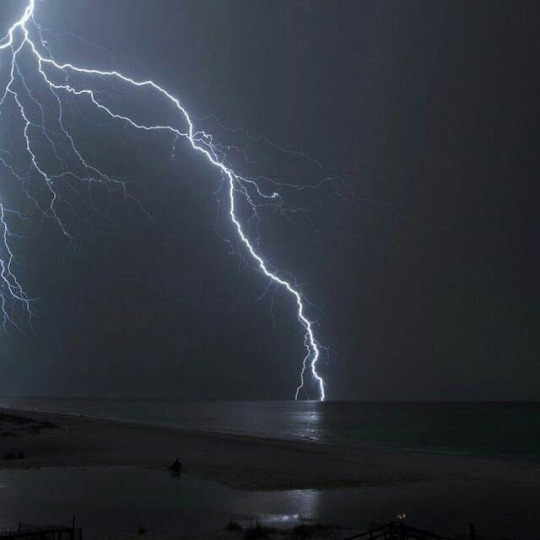
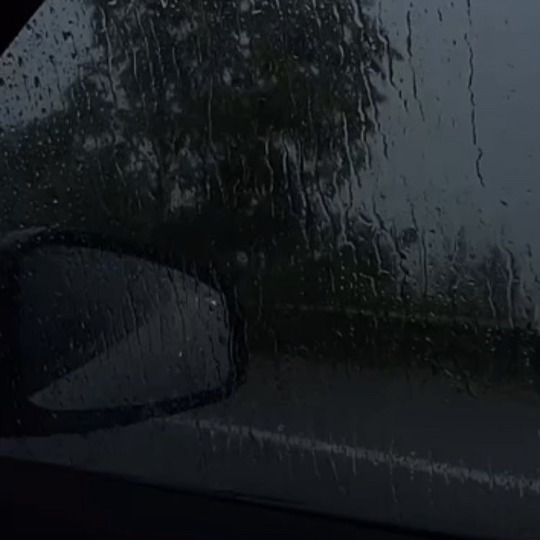

#electric rain <3#cottagecore#nature#naturecore#rain aesthetic#dark blue aesthetic#dark cottagecore#light academia aesthetic#light academism#dark academism#dark academia aesthetic#electric#lighting#thunder#I LOVE LIGHTNING & THUNDER SO MUUUCH
6K notes
·
View notes
Text
humans really think they're something. there are over 300 fish that have been producing their own electricity since before humans even knew what electricity was.
#human nature#spaceage#biology#ough girl u shock me like an electric eel#theres an#mgmt#song about this#1k#Bigpost#2k
3K notes
·
View notes
Note
Apex predator, my ass. I’m going to pet the dog 🐻🐻❄️🐼
perhaps now is a good time for some responsible bear programming to remind everyone that as cute and cuddly as they may seem, bears are lethal apex predators and should absolutely be treated accordingly if ever encountered.
DO

NOT

PET

#Responsible Bear Programming#^^ that's our tag for bears doing what they naturally do#if you do not like seeing bears behave as they naturally do -- as apex predators -- then please filter this tag accordingly friends#we are actually not accepting any complaints or suggestions about our tagging system or the content we post at the present moment#or at any point in the foreseeable future#so please don't try to comment or suggest otherwise#informative rant over now commencing educational rant#DO NOT try to pet the lethal beasts#you will be mauled and or killed#and then the bear will be killed for attacking a person#if you like bears the best thing you can do is ensure that they are not habituated to humans and do not view us as a source of food#either through your trash or through your flesh#keep yourself your neighbors and the bears safe by keeping human-bear interactions as minimal as possible#okay the team's done ranting now#(we're having A Day)#(it has a lot to do with the squirrels breaking into the floor of HQ and eating through our electrical wiring)#ask
678 notes
·
View notes
Text

Jolts from electric eels cause fish to absorb free-floating DNA
Zebrafish larvae took up genes for fluorescent proteins and began to glow after swimming with eels.
Think of it as a sort of superhero origin story for zebrafish:
Getting zapped by electric eels can allow them to acquire new DNA—and new abilities—researchers reported yesterday in PeerJ. Scientists working with genetic engineering sometimes use electricity to open temporary holes in cell membranes to allow foreign DNA to enter.
To find out whether a version of this phenomenon can happen in nature, the team put electric eels (Electrophorus electricus, pictured) and larvae from zebrafish (Danio rerio) into a tank together, along with free-floating genes that code for a green fluorescent protein.
After a day swimming amid the eels’ electric shocks, some larvae started to glow green, New Scientist reports, indicating their cells had taken in and begun to express the foreign genes.
The newly acquired DNA degraded quickly—the larvae only glowed for about a week—but it caused scientists to wonder: Could a wild animal acquire genes in this way and pass them to its offspring?
Researchers aren’t yet sure, but if so, they say it could introduce new mutations that influence the species’ evolution.
via: https://www.science.org/content/article/jolts-electric-eels-cause-fish-absorb-free-floating-dna
672 notes
·
View notes
Text
snake v bird makes for some of the sickest photos


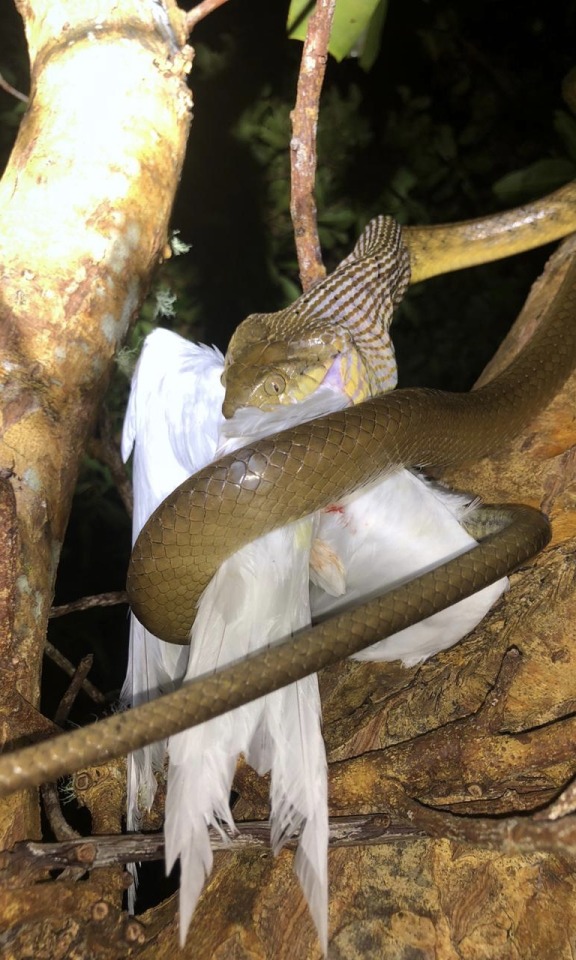
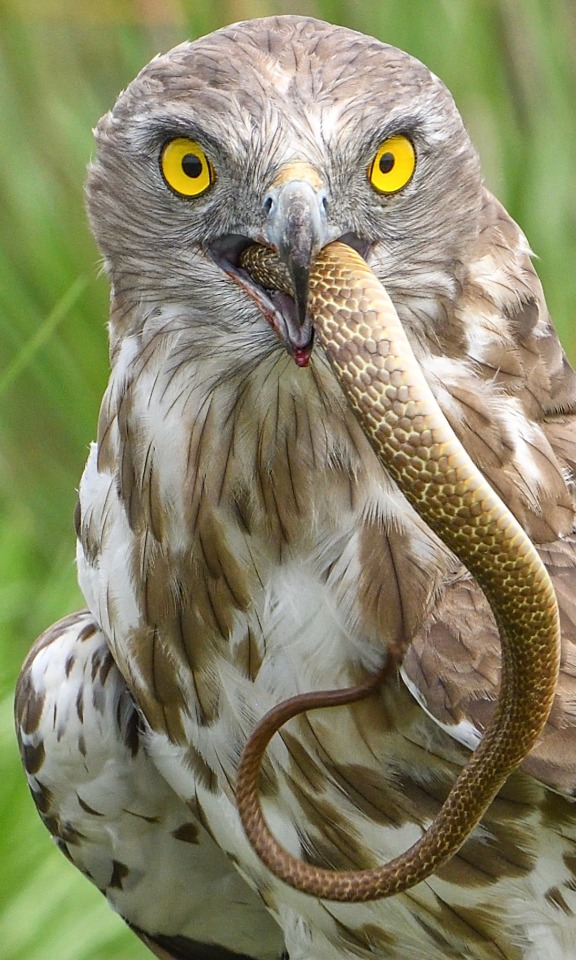

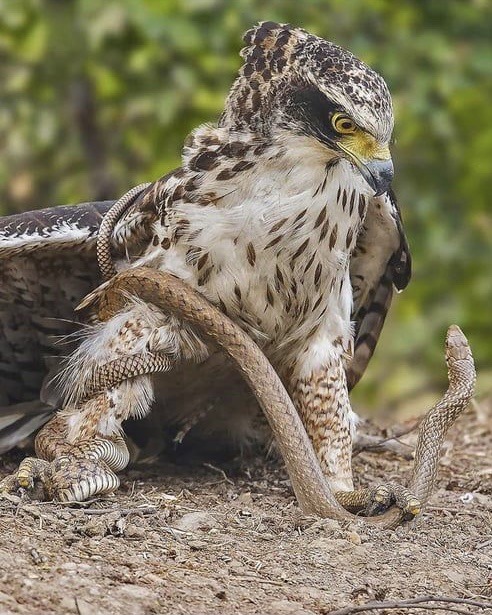
#those electric guitar noises henry makes on lpotl#love even matchups in nature#animal death#predation#birds#snakes#constriction#serpentine#fave pics#animals
723 notes
·
View notes
Text

#classic cars#car photography#suv#lamborghini#porsche#porsche 911#automobiles#race car#hypercars#photography#wonderful#sea view#cars 3#vintage cars#electric cars#cars#fast cars#car show#porsche kittisawasd#porsche pachara#porsche gt3rs#photoshop#picture#porsche 992 gt3#photograph#i sell photos#ocean#waves#beaches#nature aesthetic
213 notes
·
View notes
Text
#for those wondering yes this post is influenced by hoyoverse but whatever. its genericized okay#i find it very interesting how split this poll is! I'm dividing gravity/time into 2 equal sections though because i honestly fucked up w tht#given 11-12 options the avg perfect split should be around 8 and 9% each.#didn't expect nature and electricity to be so popular#or vanilla extract tbh
522 notes
·
View notes
Text
#good news#battery#trains#train travel#electric trains#environmentalism#science#battery power#batteries#environment#nature#travel
155 notes
·
View notes
Text


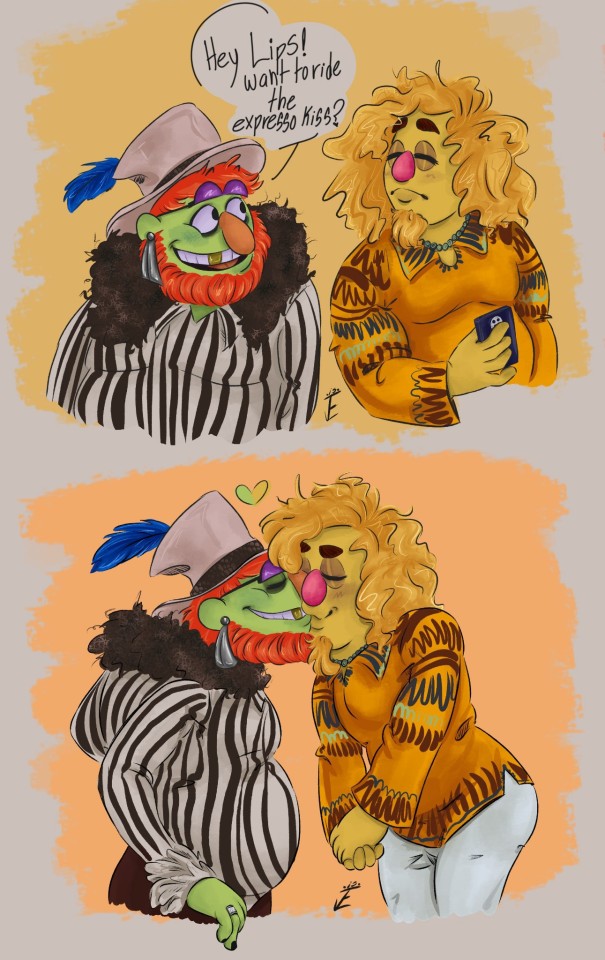
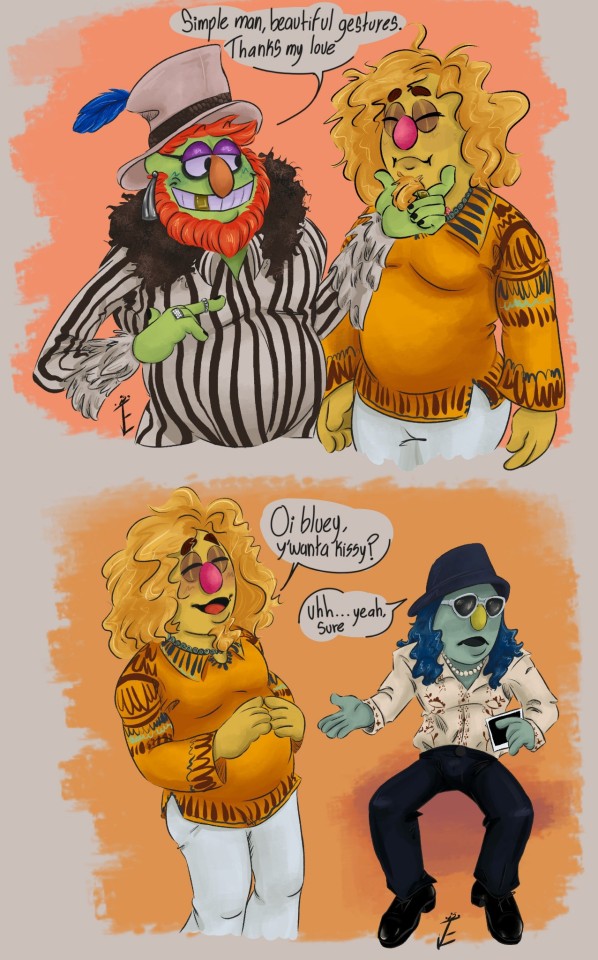
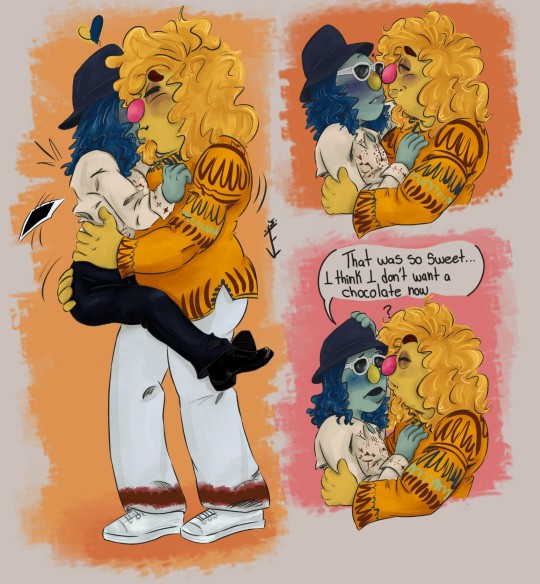

Finally finished! I had a lot of fun doing this. I love the "polymayhen and animal like their son". Personally I find it very justifiable, I mean, their songs, covers, the way they sing it... Truly love it
#MJH: Muppet Jack Headcanon#polymayhem#otp: dr pepper#otp: act naturally#otp: mouth#otp: private jam session#otp: love me forever#muppets#muppets fanart#muppets mayhem#the electric mayhem#dr teeth and the electric mayhem#mini comic#dr teeth#floyd pepper#janice muppets#lips muppet#zoot muppet#animal muppet
488 notes
·
View notes
Text
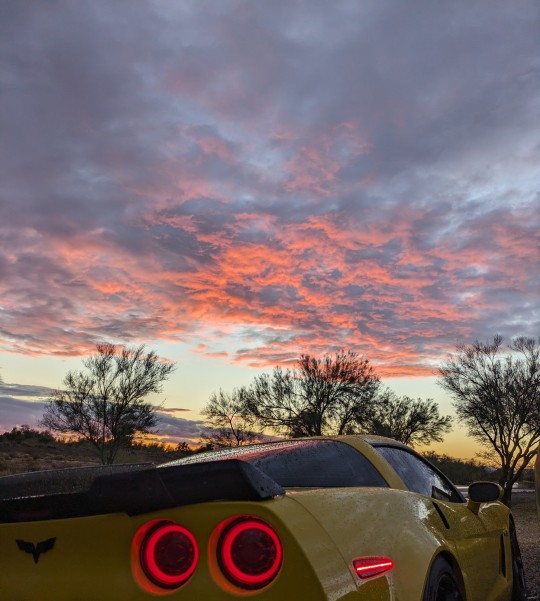
corvette sunset
#mine#aesthetic#pretty#corvette#chevelle#cute#oldsmobile#chevrolet#chevy#convertible#art#light#love#nature#indie#light indie#photography#cars#vintage cars#suv#classic car#classic cars#volvo#cadillac#fast cars#electric cars#sunset#sunsets#mountains#sky
87 notes
·
View notes
Text
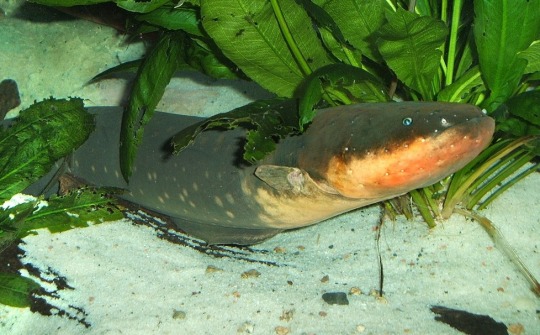
Electric Eel (Electrophorus electricus), family Gymnotidae, order Gymnotiformes, found in freshwater habitats in northern South America
These predatory fish are able to stun prey using electric shocks of up to 860 volts.
They are not true eels, but are in the same order as neotropical knifefish.
photograph by Steven G. Johnson
#electric eel#knifefish#bony fish#fish#south america#electrophorus#gymnotidae#gymnotiformes#animals#nature#ichthyology
155 notes
·
View notes
Text
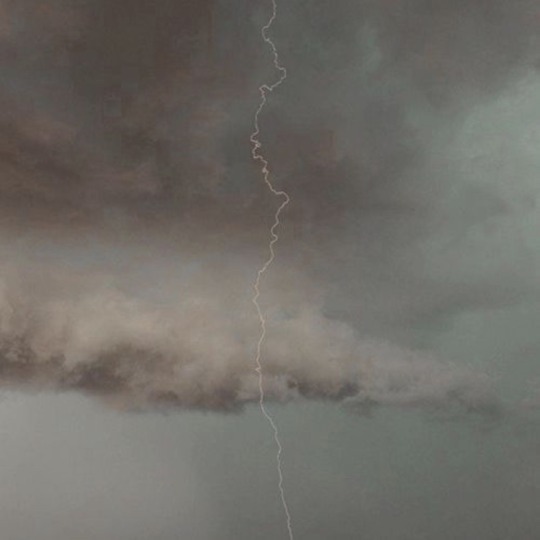
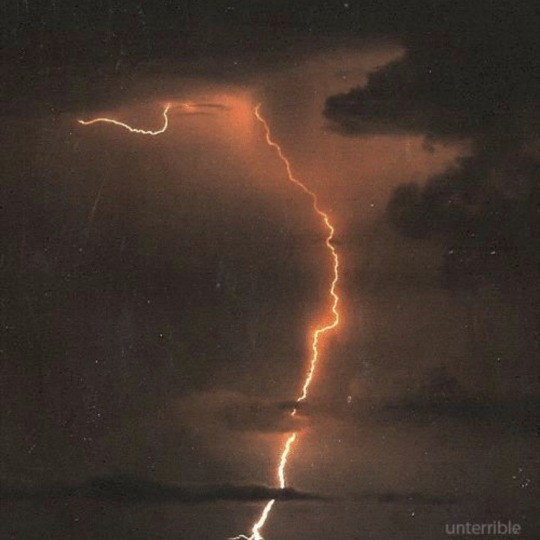
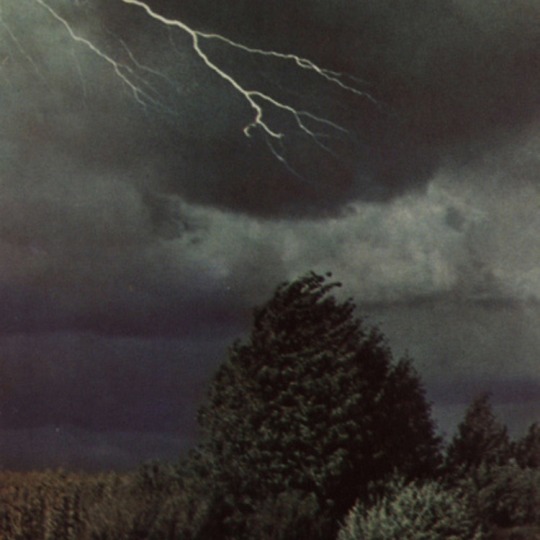

#thunder and lightning!#I love it SO much#the smell and the electricity in the air#ahh it’s the best thing!#cottagecore#nature#naturecore#thunder#thunder and lightning#rain#rain aesthetic#dark academia aesthetic#electric#clouds#sky#cottage academia#light academia aesthetic#dark clouds#dark cottagecore#storm#thundercore
14K notes
·
View notes
Text

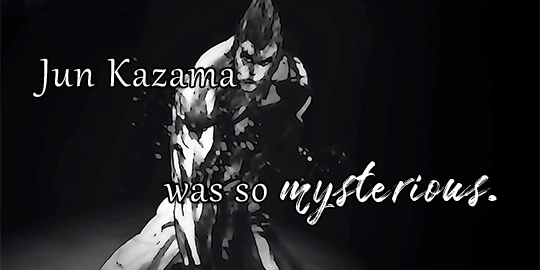



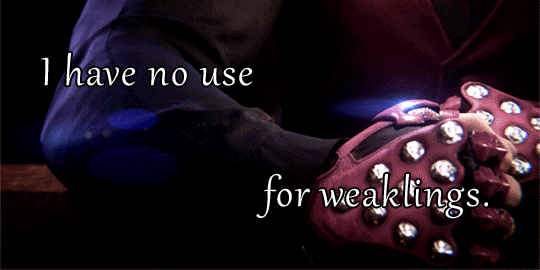

well have you considered that maybe the unstoppable force is in love with the immovable object
maybe the reason one refuses to stop and the other refuses to move is because they both long for the collision
#jun kazama#kazuya mishima#kazuya x jun#kazujun#kazjun#tekken#tekkenedit#my edit#my stuff#wowie this took me AGES!#here is that thing I've been working on for our beloved mother nature and daddy electric#I wanted to do something encompassing the bits we see of their relationship throughout the games!#it's extremely clear to me they love each other intensely and have for the past 22 years so my aim was to evoke that sense of scope#guess you could call this my kazjun manifesto in a way haha#the quotes; layout; trying to balance everything visually took some planning!#hope youse like 💖💖#also thank u to divorce-enjoyer for the post caption text. i would have linked the post but tumblr yelled at me#bc all the coloured text html was too many characters already lol
72 notes
·
View notes
